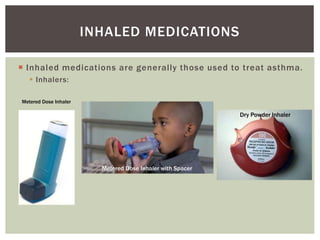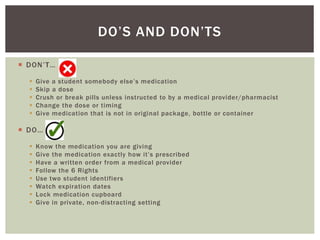This document provides guidelines for training non-licensed school personnel in medication administration. It discusses federal and local laws regarding medication in schools and outlines the objectives and purpose of medication administration training. The training covers understanding medication documentation, storing and handling medications properly, administering medications correctly, and responding to medical conditions in students. Participants must complete a return demonstration of medication administration to be certified every 3 years.







































































